Standing tall along Rügen’s north shore are the largest chalk cliffs in Germany. Once adjoined with the chalk cliffs on the Danish island of Møn in a large chalk plateau, these cliffs tell a story of the past.
Inspired as I always am by Sheena and Michelle from Shinimichi, their story about Rügen from 2017 has always stuck with me. The images of the white chalk cliffs and the vast woodlands above them were stored in the back of my mind, and every once in a while, I’d recall them, wishing I could see the place for myself. Ever since reading their article, I’ve been dreaming of visiting Rügen. This summer, with Covid-19 making my planned move to Greenland impossible, a different dream came true. I finally went to Rügen.
Rügen is the largest island in Germany and the sixth largest in the Baltic Sea. It’s a popular summer destination for German holiday makers that come to enjoy the vast beaches and seaside resorts, something that is quite rare in Germany, a country that is almost landlocked. But Rügen isn’t only sandy beaches and high cliffs, the island also has an interesting history to explore. One man that the whole world wants to forget – and especially Germany – was particularly fond of the island. He loved it so much that he had the longest building in the entire world erected along its sandy shore.
When looking for a destination for our family holiday this year, I suggested Rügen. I was thrilled when my family agreed to spend a week exploring the island. They picked me up on their way south from Albersdorf, where I’d just attended a week-long Stone Age gathering. Together, we drove the long way to Stralsund, a gorgeous city that lies just before the bridge to Rügen. I’d searched for accommodation on Rügen but there were no options within mine and my younger brother Brandon’s budgets. Instead, we opted for Stralsund, where Brandon and I stayed in a cheap hostel a few blocks from the hotel that our parents and grandmother stayed at. It was perfect!

Finding the chalk cliffs in Jasmund National Park
Out of our seven full days in the area, we spent four of them on Rügen plus an afternoon. Enough time to see everything we wanted yet not enough to go beyond scratching its surface. Originally, my dream had been to cycle around the island, but since I had my family with me, a roadtrip was more suitable. Driving turned out not to be a great transportation mode on the island though. I mean, it was easy to get from place to place, but parking was near impossible. At almost every destination, we had to park far away from the attraction and pay for parking every single time, even in the most rural areas. Not very hospitable of you, Germany!
On our very first day on the island, we experienced this parking nightmare at Rügen’s perhaps most popular destination. I was desperate to see the white chalk cliffs located in Jasmund National Park, so we headed there first. Thinking we could just drive up close to Königsstuhl, the highest cliff in the area, none of us were prepared to do much hiking. But we found out that the closest parking lot is 3 km from the site, and while there are busses that run from the parking lot to Königsstuhl, it seemed silly to pay for both parking and a bus. So we decided to hike despite the long journey and physical challenges for my grandmother and dad who aren’t used to hiking long distances. It was actually a nice hike which took us through the forest and past many beautiful lakes.
But when we got to Königsstuhl, we got another surprise. Because – typical Germany – there’s an entrance fee to see the cliff! If there’s something I hate paying for it’s to see nature – I mean, who has the right to capitalize on nature?
Thankfully, I could see on my maps.me (life saviour app!) that there’s a hiking trail to a viewpoint called Victoria-Sicht, which didn’t take long to hike to. We actually came across three viewpoints and the further up we went, the better the views got!
While the cliffs definitely are the star of the national park, something else actually got the area inscribed on UNESCO’s World Heritage List. The beech forest that covers the surface of the cliffs was added as an extension of the Ancient and Primeval Beech Forests of the Carpathians and Other Regions of Europe in 2011, another brilliant reason to visit this enchanting national park.
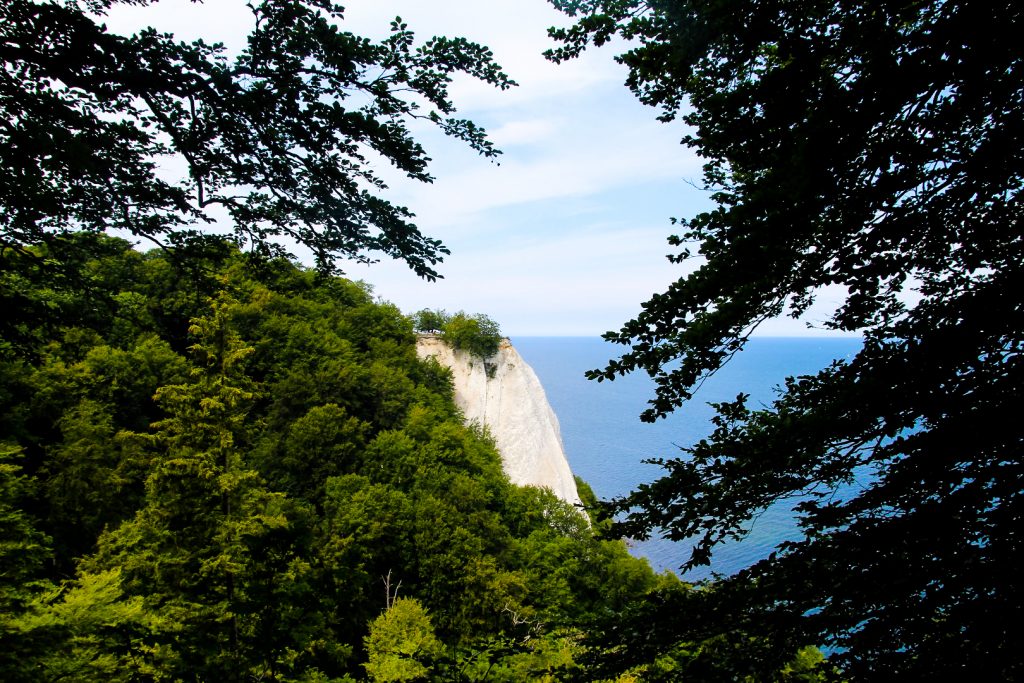
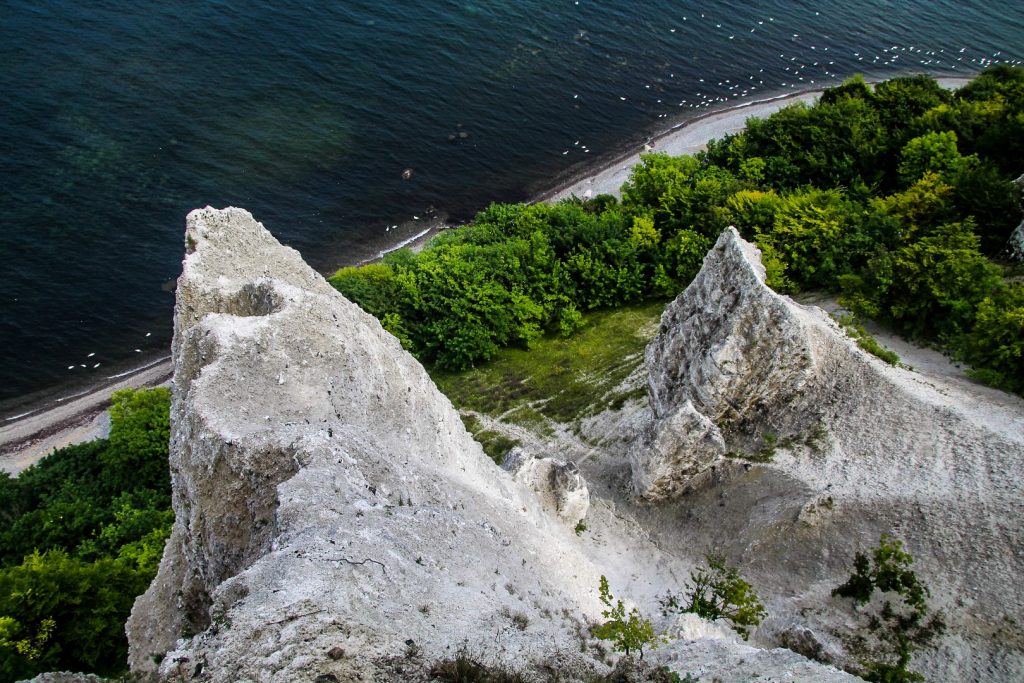
Cape Arkona at the northern tip of Rügen
Our next destination had a similar parking situation, although this one was “only” two kilometers away instead of three. But we decided to get creative. We were going to Cape Arkona, a 45-metre high cliff with two lighthouses at the tip of the Wittow peninsula. We drove up to the lighthouses and found a small parking lot for staff, where we took turns waiting in the car in case anyone came by. No one ever did, but the risk wasn’t worth it. Neither was the walk!
As well as the two very different lighthouses that stand side by side, the cape also houses a navigation tower, two military bunkers, souvenir shops and, most importantly, the remains of the Slavic temple fortress of Jaromarsburg which was being excavated at the time we were there! Later that day, I received a message from a follower on Instagram who had been excavating the site that same day! What a coincidence. How I wish I had said hi to my German colleagues!
Three of us climbed the tallest of the two lighthouses to get a view of the area. It was a nice panorama, but the best view was actually found by looking down at the other lighthouse below it!

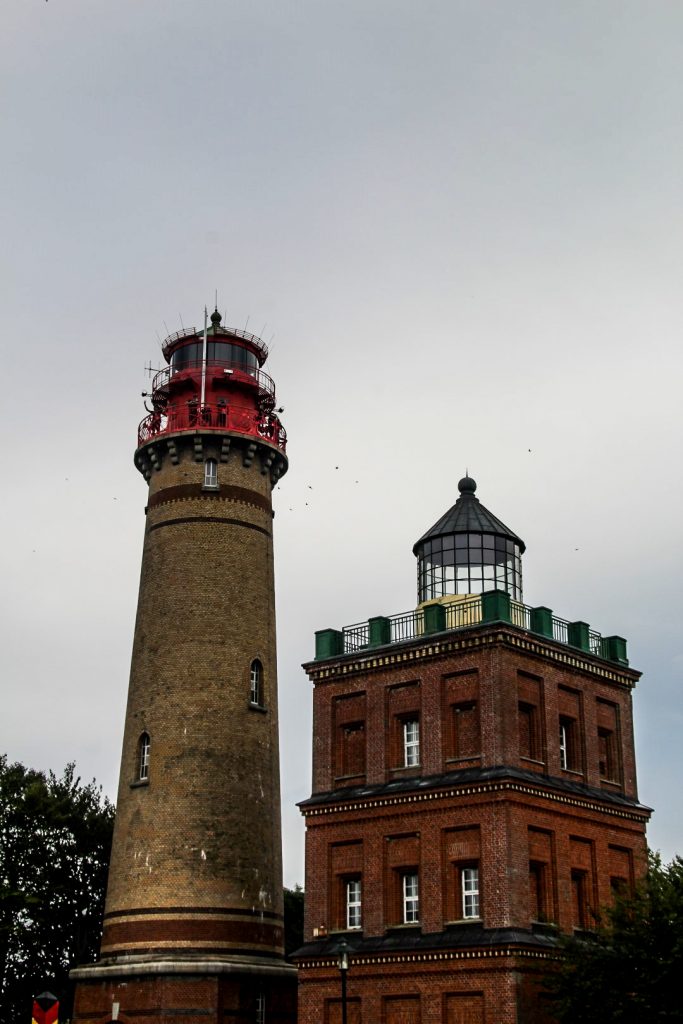

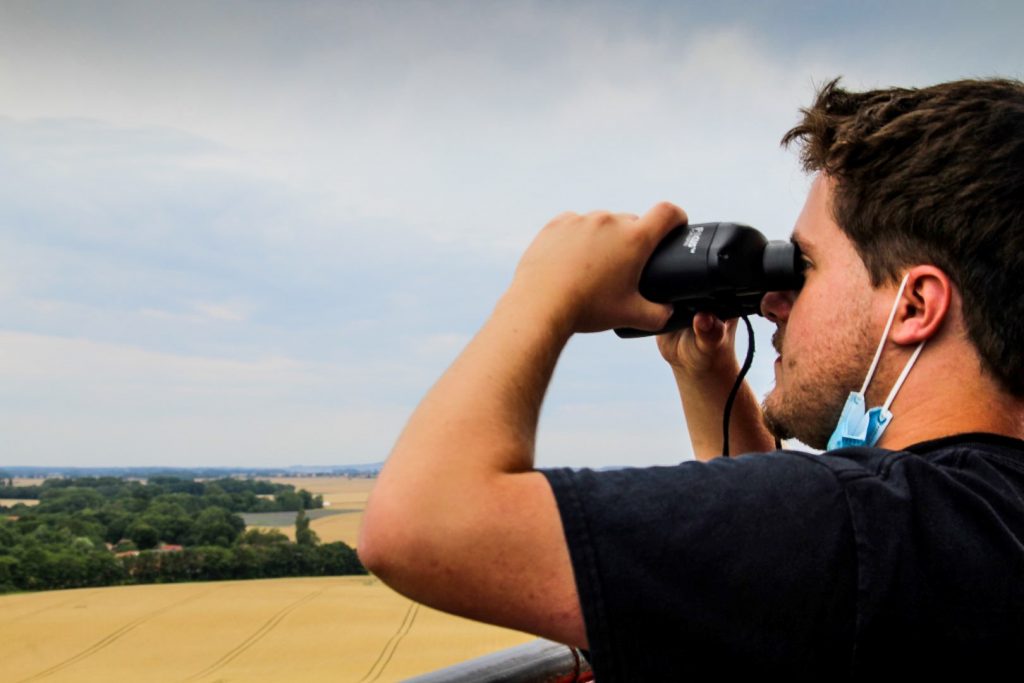
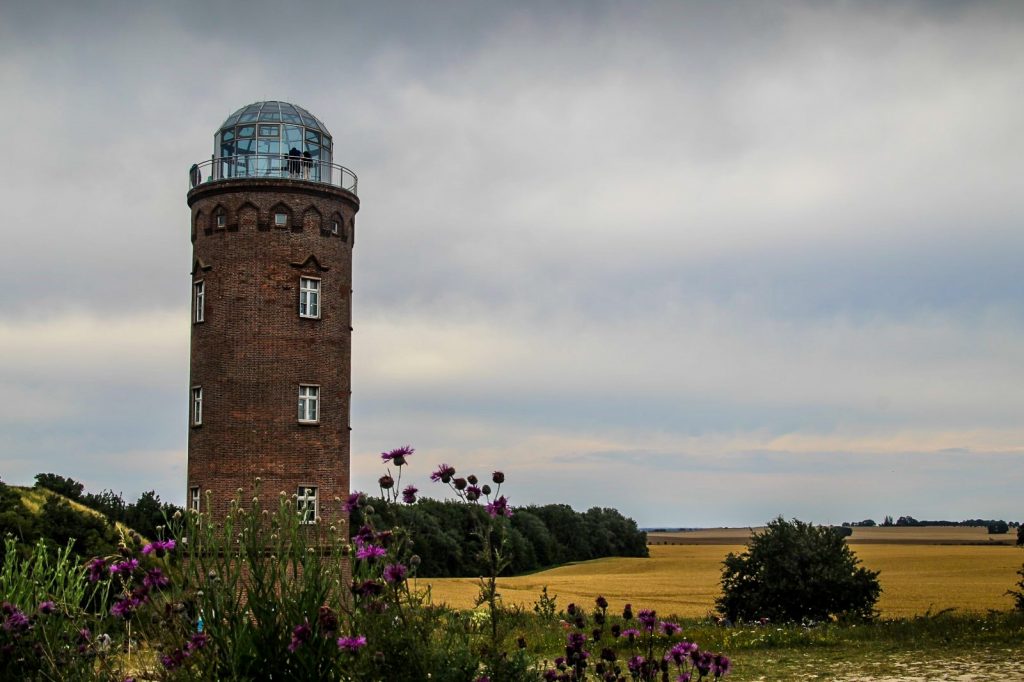
The tiny fishing village of Vitt
A few kilometres south of Cape Arkona lies the tiny fishing village of Vitt. Nestled in a gully below the sea cliffs with no road access to the village itself, you would think there would be a car park nearby. But we failed to locate it, so we did the same trick again. Brandon, our mum, grandmother and I took a wander through the village and then Brandon and I showed the same places to our dad. The village is too gorgeous to be missed by anyone!
Vitt is often described as the most romantic place on the island, and I have to agree. Walking down to the village along a narrow passageway suddenly reveals the tiny settlement of whitewashed thatched cottages. At the edge of the village sits a tiny fishing harbour with a wonderful view of Cape Arkona. And just outside the village stands a tiny octagonal chapel, built in the early 19th century. It has the best sound I’ve ever experienced. Even my singing voice sounded good in there! I loved the atmosphere of Vitt and immediately wished we weren’t just passing through.

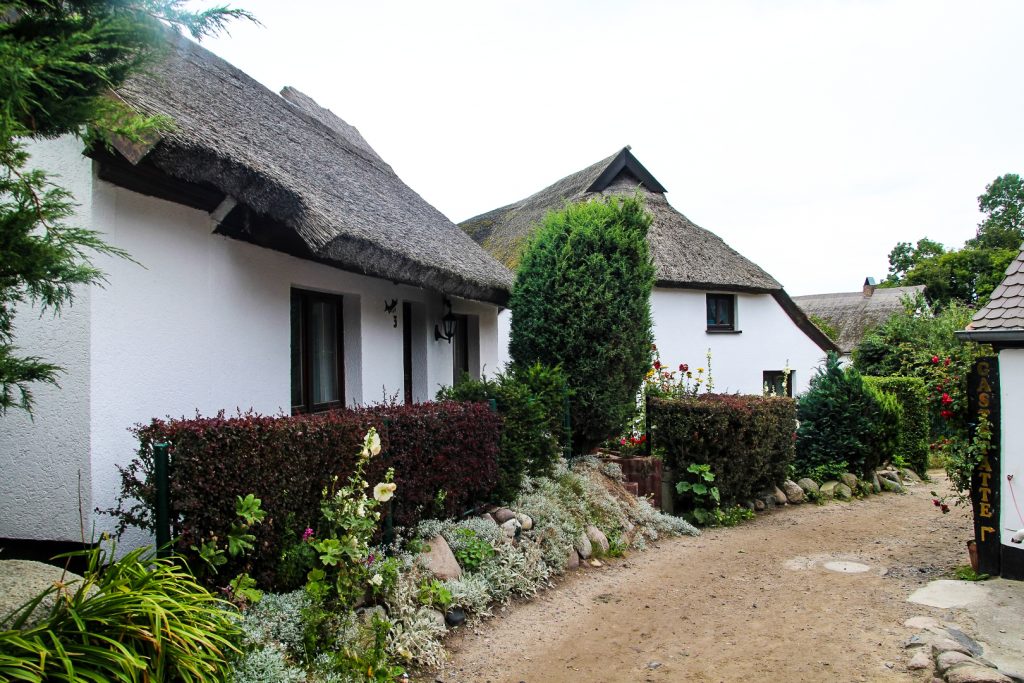
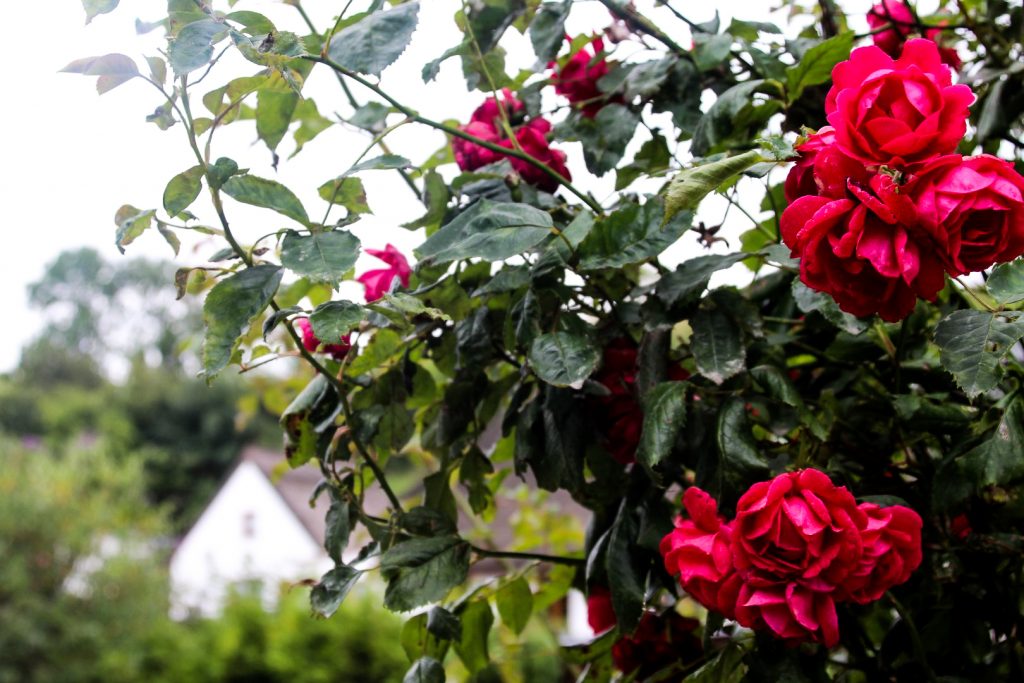

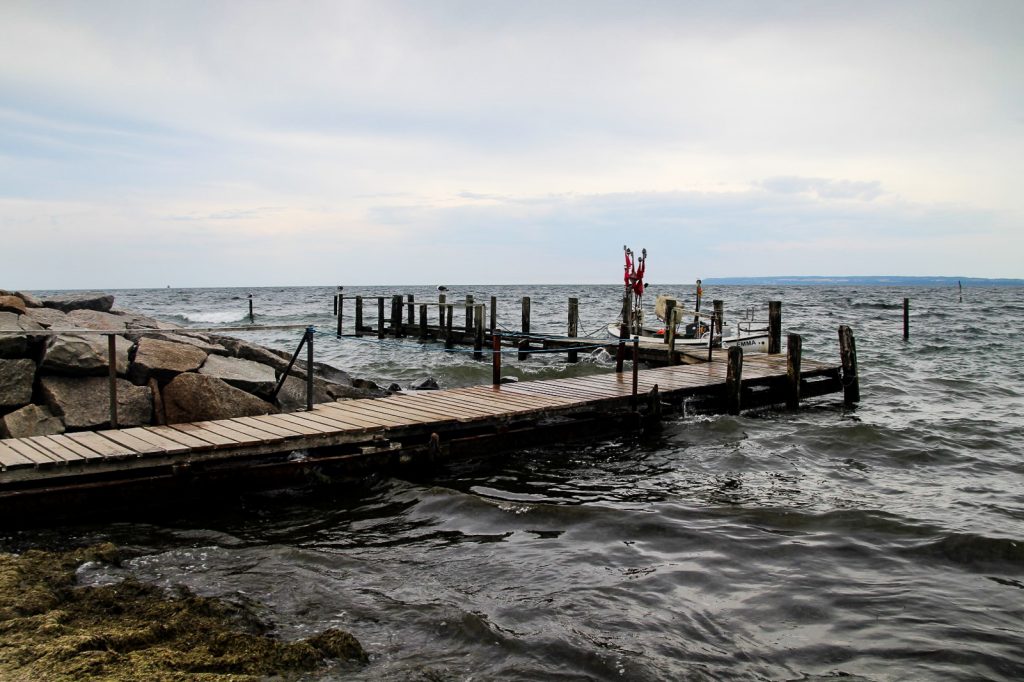
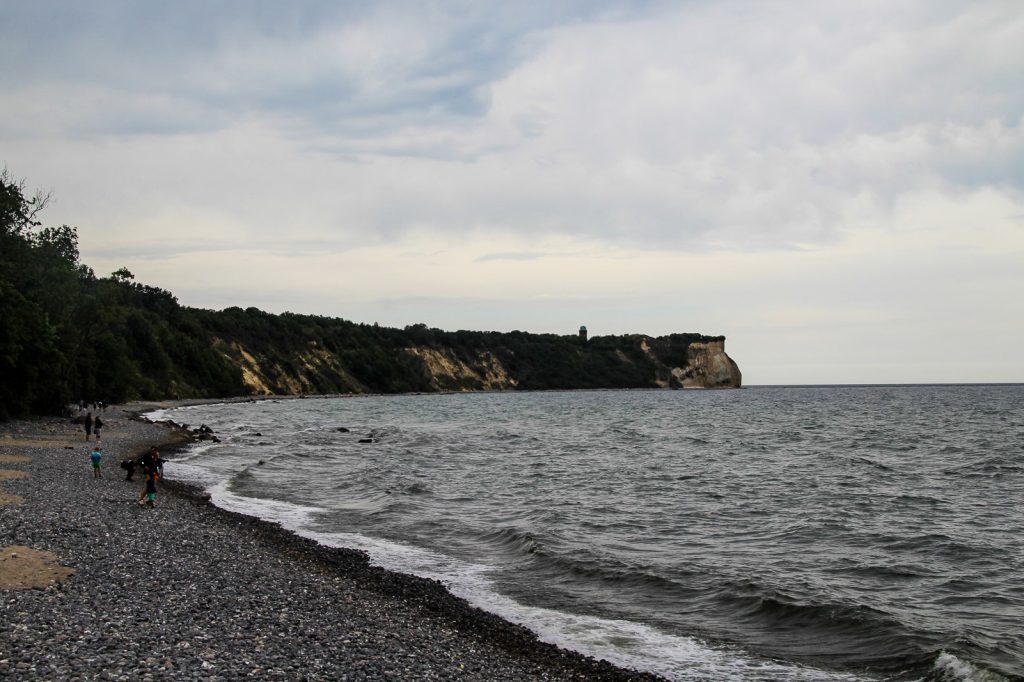
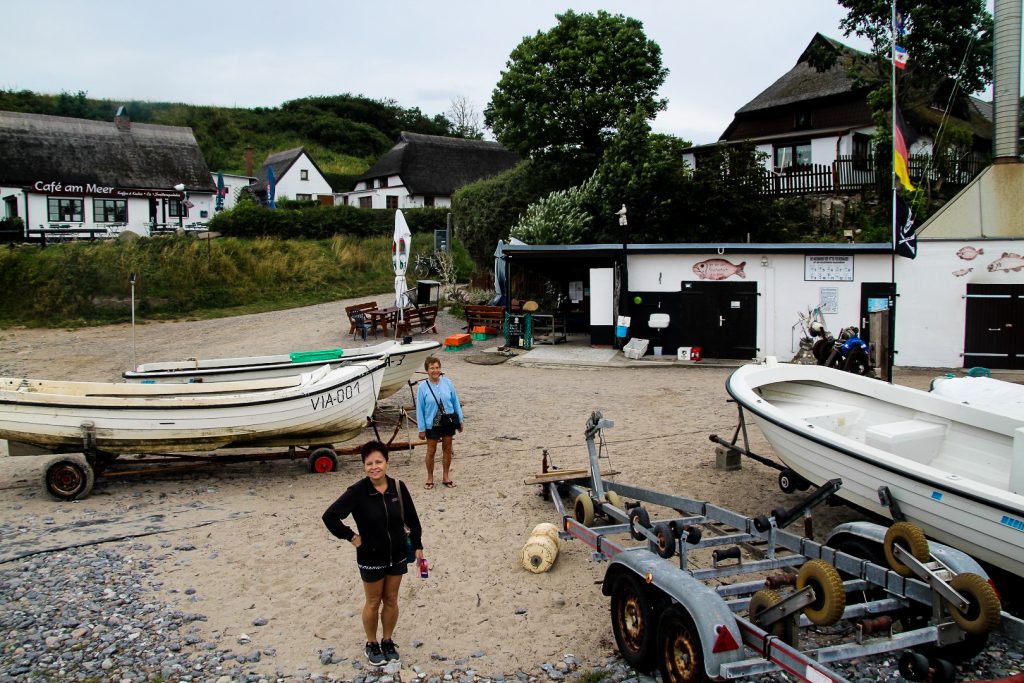
The thatched cottages of Putgarten
The most gorgeous villages on Rügen all seem to be in the north. Putgarten, a slightly bigger village less than two kilometers from Vitt, is no exception.
We took a quick stroll through the village as our last stop for the day. One street, Arkonablick, is particularly beautiful. Its cobbled road is lined with different coloured cottages, all with thatched roofs, flowers and cute decorations. A true fairytale scene.

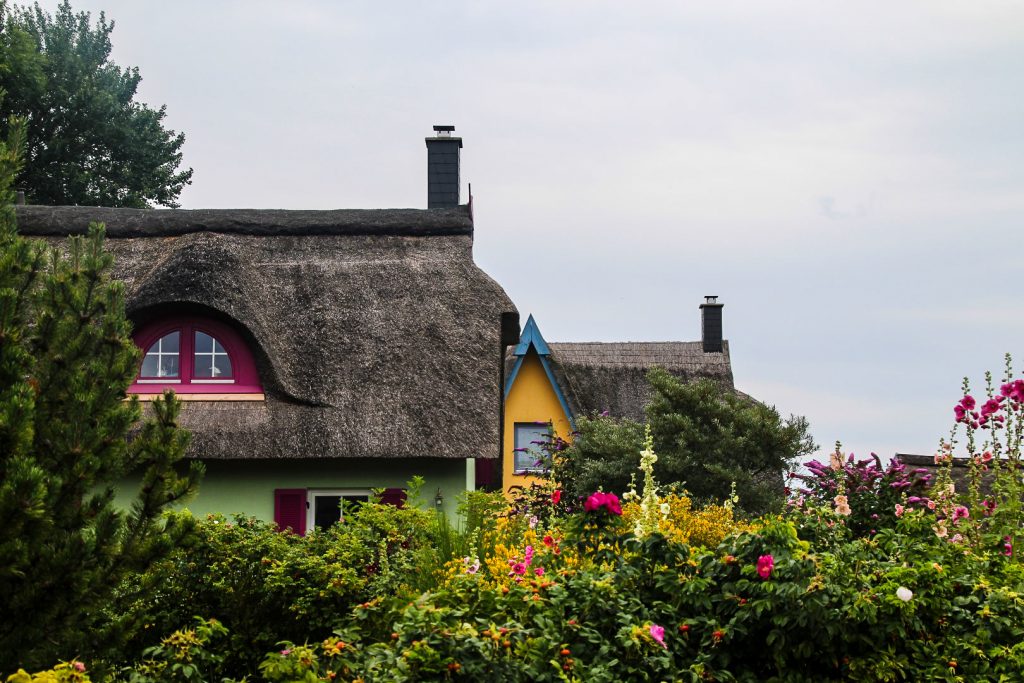

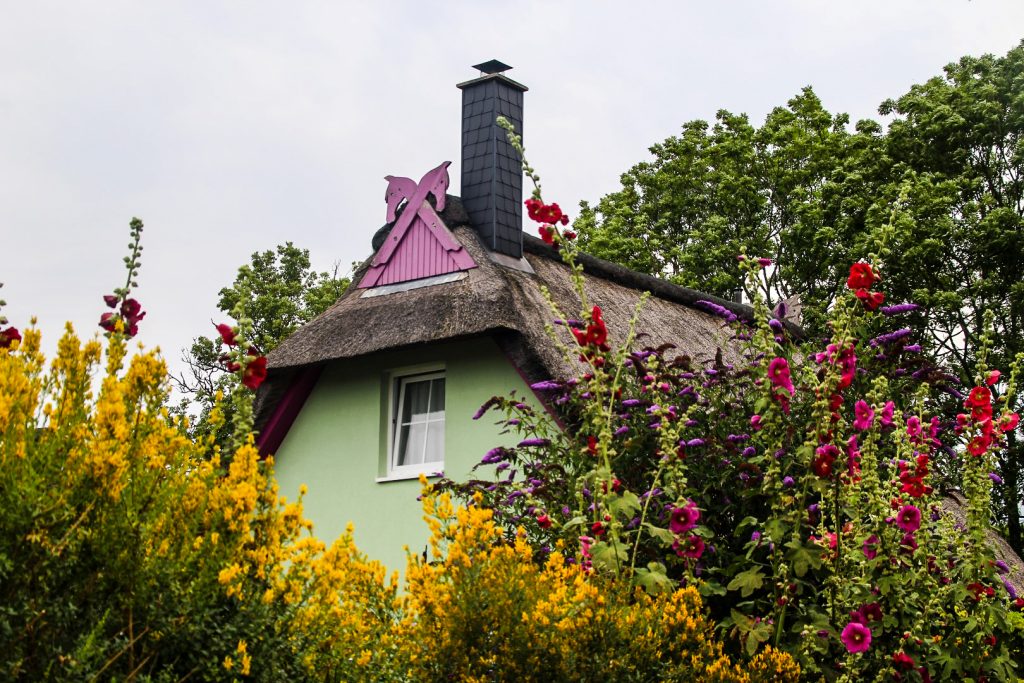
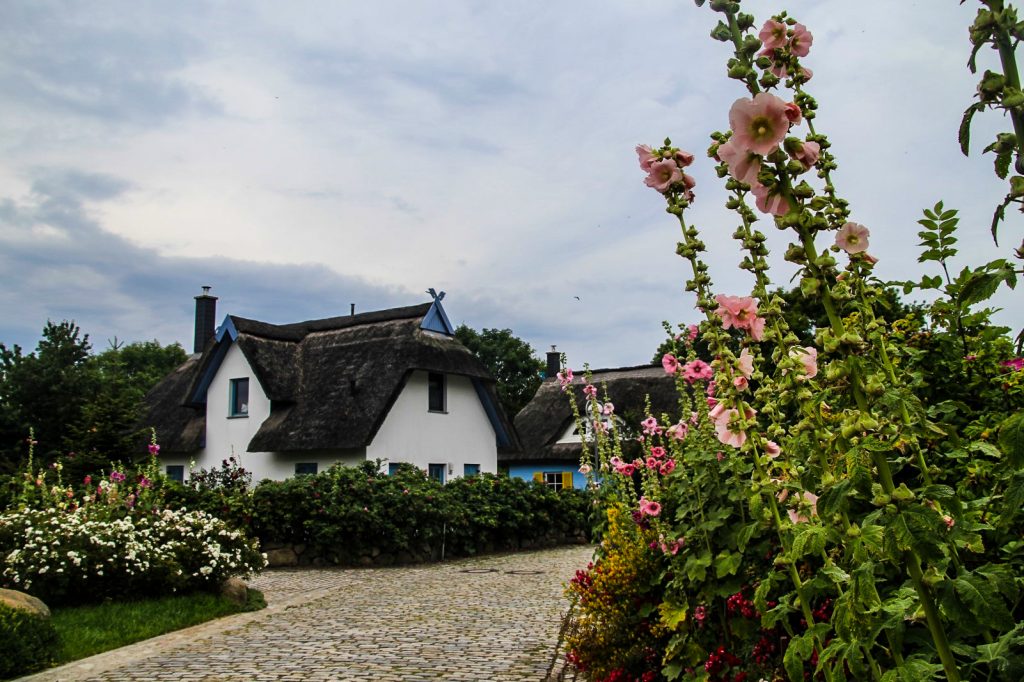
A ride to the seaside towns with Rasender Roland
Two days after our journey around Rügen’s northern end, we returned to see more of the island. This time, we headed to the southeast, which is renowned for its many popular seaside resorts. But we weren’t there to lay by the pool or hang out on one of the many sandy beaches, we were there to travel between two seaside villages on an old steam train!
The steam-powered narrow-gauge railway, Rasender Roland, has connected the seaside towns on the southeastern coast from Lauterbach to Göhren since 1895. Many of the historic steam locomotives and coaches are still in use to this day, carrying people along the 24 kilometers of tracks at a maximum speed of 30 km/h.
Today, the train is mostly used by tourists wanting the experience rather than having to get from A to B. For this reason, tickets are quite expensive, so we chose to only ride the 30-minute section between the seaside towns of Binz and Sellin. These popular whitewashed towns are prime examples of the Bäderarchitectural style (‘resort architecture’), which is characteristic of seaside resorts on Germany’s Baltic coast. Both towns are home to two enormously long piers, with Sellin’s pier being Rügen’s longest at 394 metres. Sellin Seebrücke is particularly beautiful and is well worth a stroll along. If you fancy a taste of the local dishes or a peek at the seabed, the pier also boasts a high-end restaurant and a diving gondola!
But the best thing about these seaside towns is definitely Rasender Roland. It was endlessly enjoyable to stand in the open wagon, looking up at the trees as it slowly puffed its way through the dense Granitz forest.
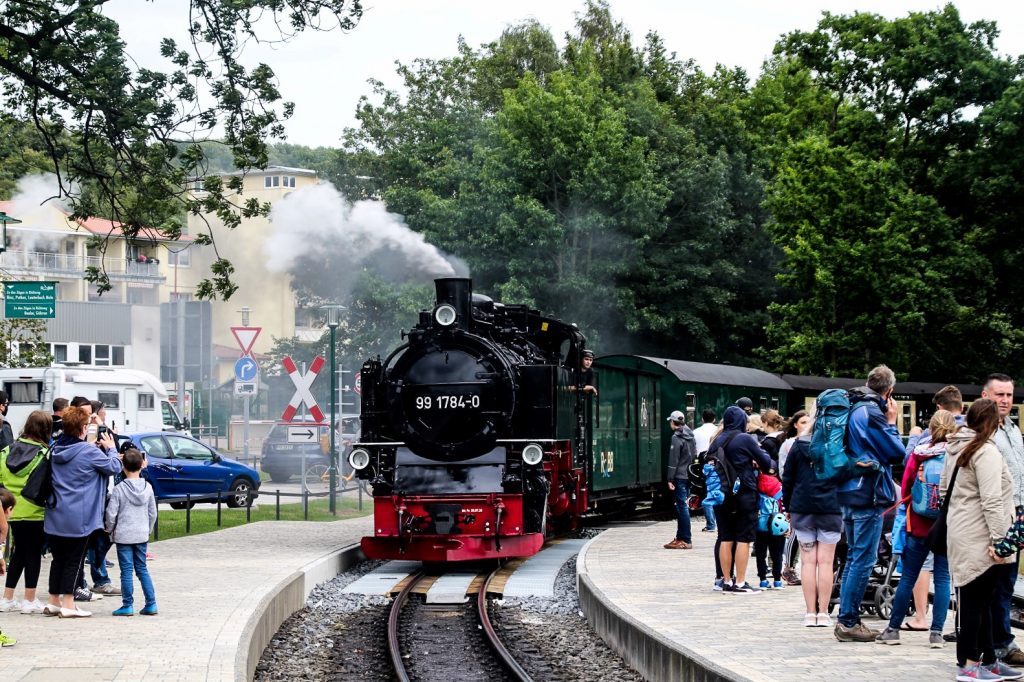



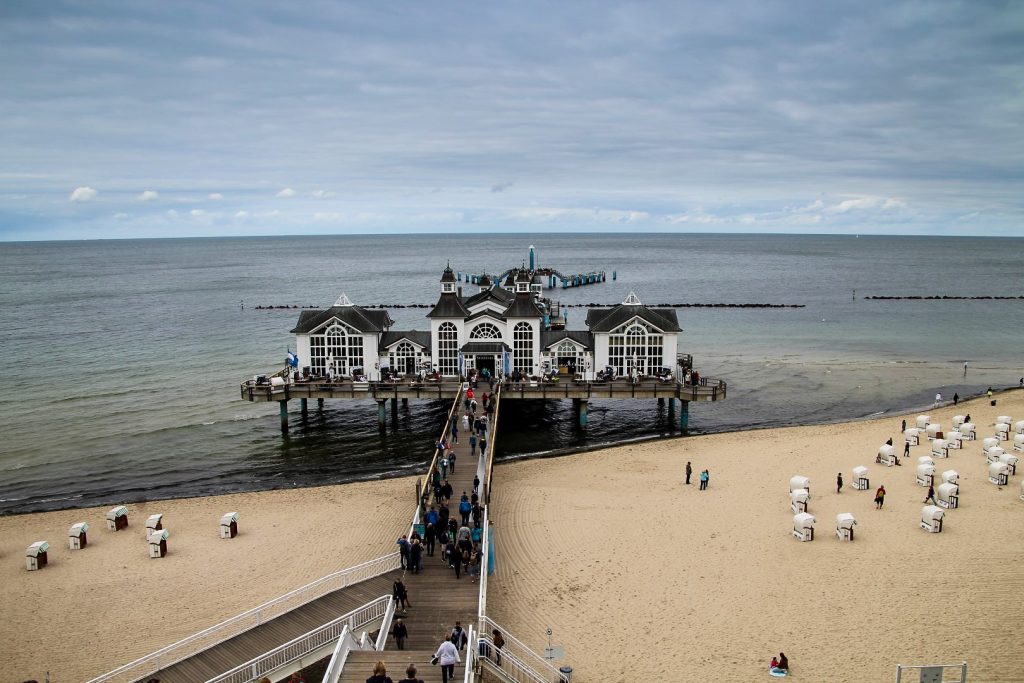
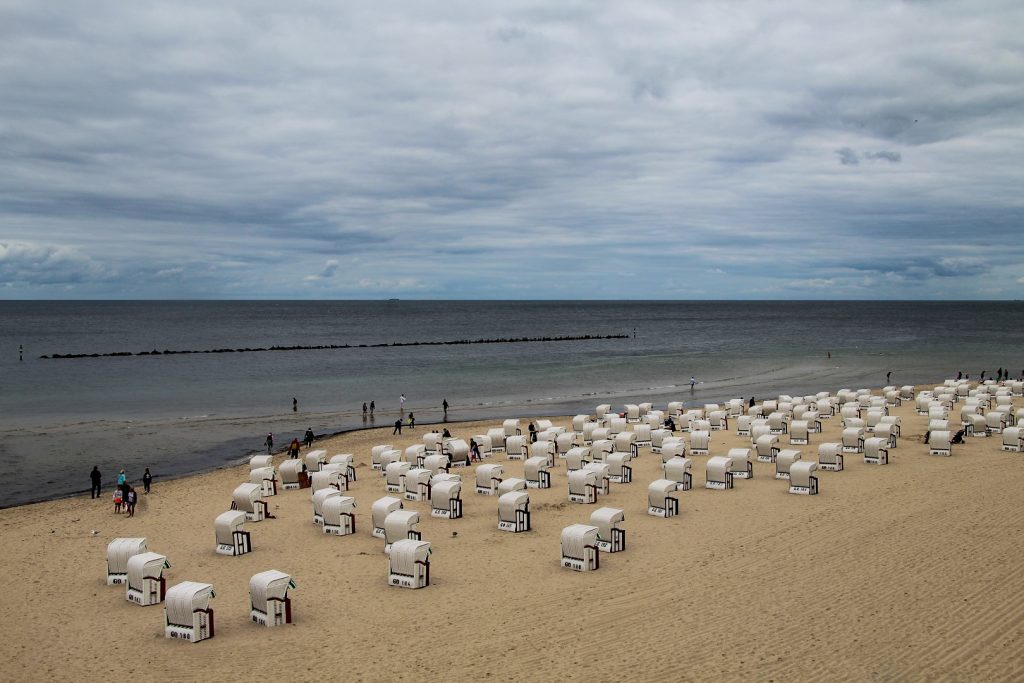
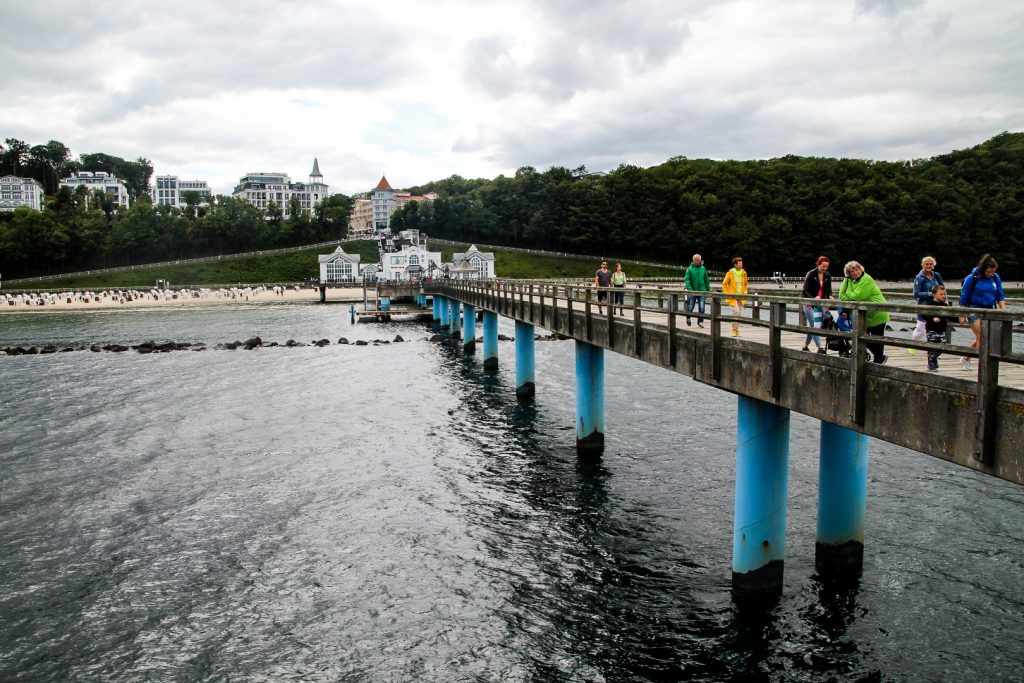
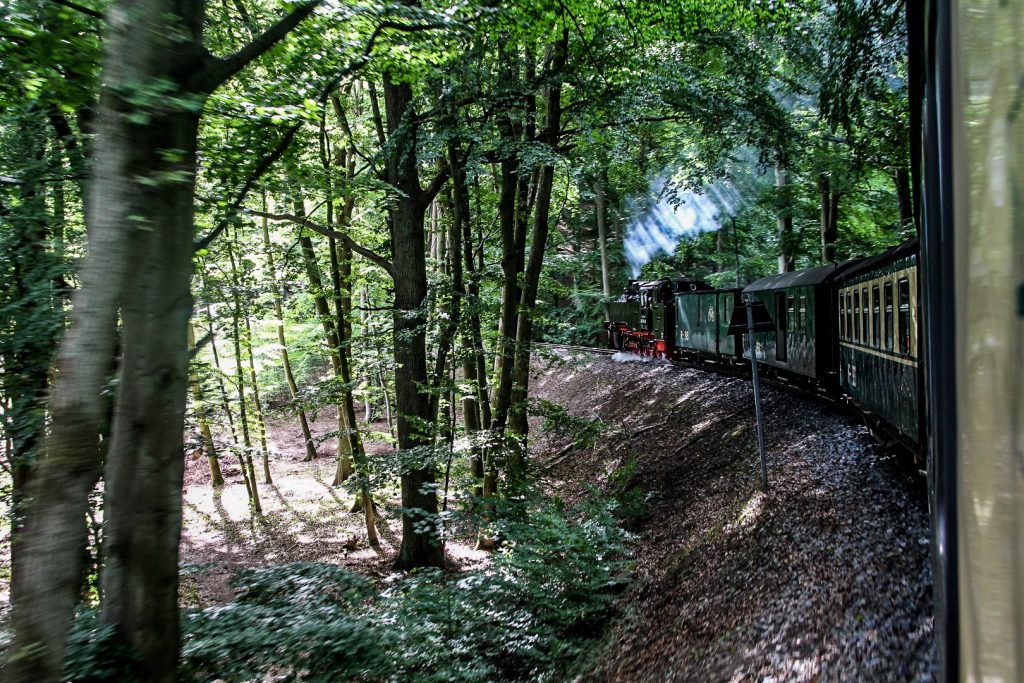
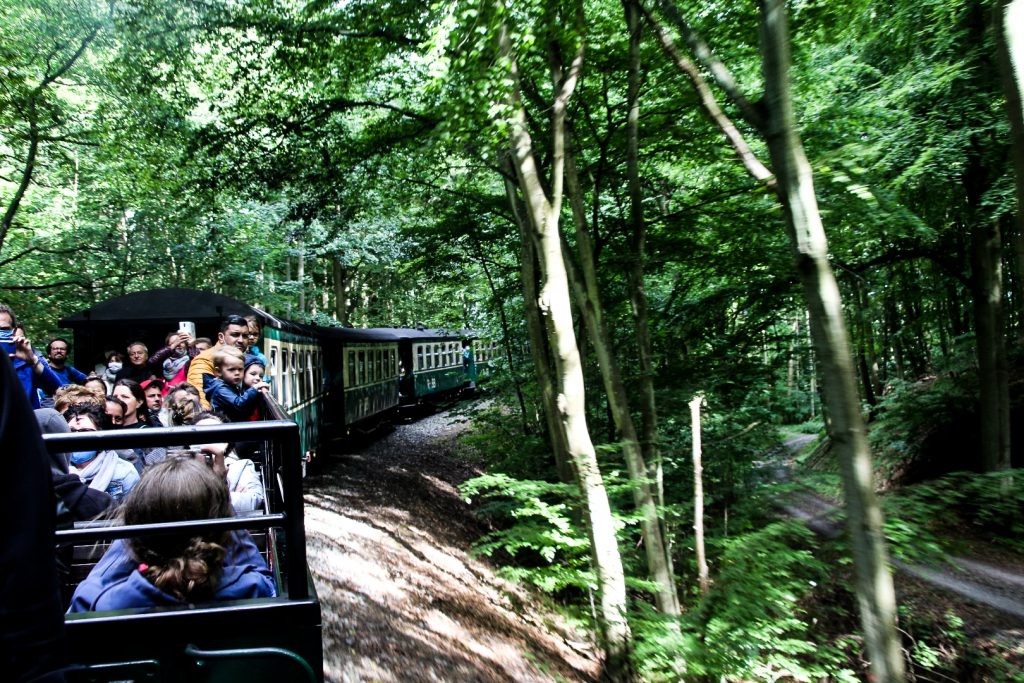
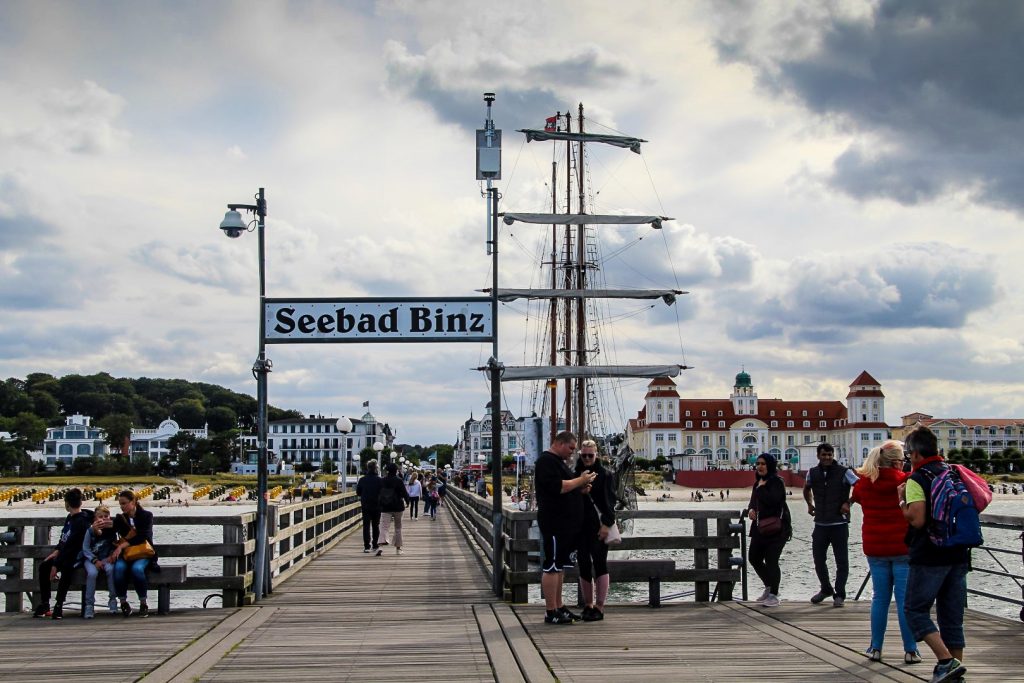
Prora, the longest building in the world
We returned to the southeastern part of Rügen the following day to see another seaside resort, but this one stands out from the rest by its dark history and interesting architecture. This was the place I was the most excited about seeing – Prora or the Colossus of Prora, the longest building in the world (besides fortifications).
The enormous building was ordered by Hitler who planned it as a holiday resort with swimming pools, a cinema, a theatre, a dock for passenger ships and beds for 20,000 Germans of the working class under the Kraft durch Freude (‘Strength Through Joy’) organisation. This organisation was designed to attract the people of the working class to the Nazi Party by offering leisurely trips and cultural events at affordable prices. In 1937 alone, 1,7 million people went on package tours and 7 million on weekend tours with Kraft durch Freude. In many ways, it was a successful tool to spread Hitler’s propaganda.
Construction work began in 1936 with over 9,000 workers involved in the project, but Hitler’s mighty dream resort was never completed as the Second World War broke out three years later. Eight identical buildings were completed with a length of 4,5 km parallel to the beach, but they were empty shells. The interior was never finished and the building never served as a holiday resort, instead, some of the blocks were used for various military purposes after the war, but most of it was left to decay. Two housing blocks were demolished in the 1940s, leaving the building with a length “only” 3 km, which can still be seen today.
In the 1990s, Prora was given landmark protection as a particularly striking example of Third Reich architecture. Attempts were made to sell the entire building as a whole, but when that failed, it was decided to sell the blocks individually in 2004. Since then, most of the buildings have been completely renovated, and the site now holds several holiday homes, hotels and Germany’s largest hostel. It’s weird to think that Hitler’s dream came true, although I’m sure he wouldn’t approve of the much more diverse group of people that now stay overnight in Prora.
Like so many other places on Rügen, we had to park quite far from the building, but it didn’t matter as it was interesting seeing the building unfold before our eyes as we got closer. We walked through a passageway in the building to the beach, located behind a huge wall with anti-nazi graffiti. Families were out in the gardens of their holiday homes, enjoying themselves like they were in any other holiday resort. To me, it was some sight to see considering the dark history of the place.
I was happy to discover that not all of Prora has been renovated. A large section in the north still stands as it did when construction work terminated in 1939. I hope they keep it like this as Prora is a historical building that tells a story about Hitler and his Nazi regime that the history books often exclude.
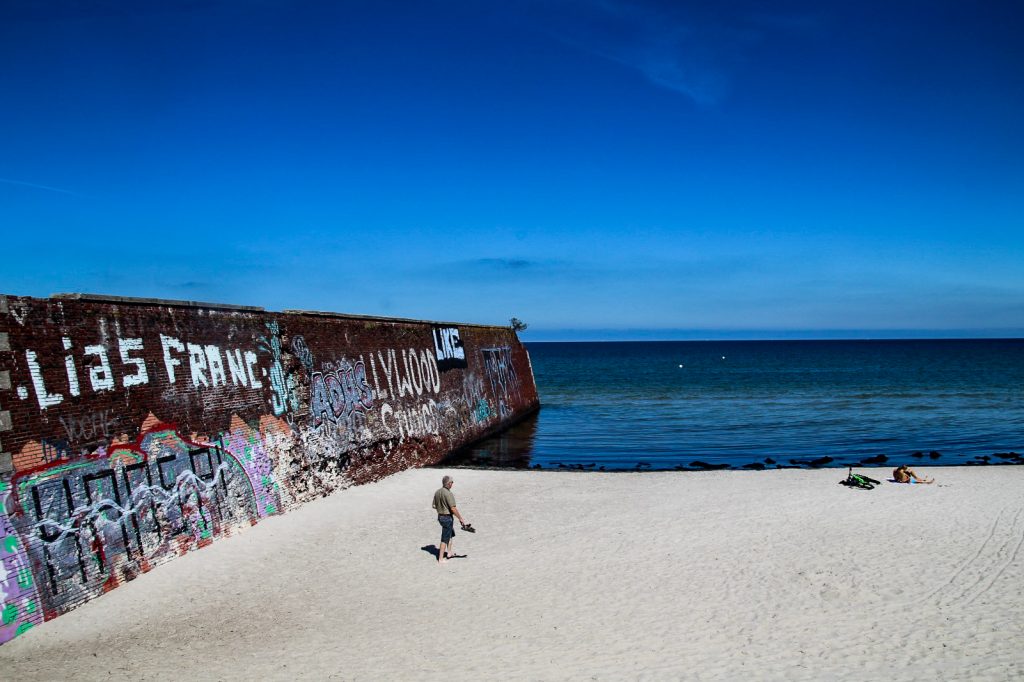

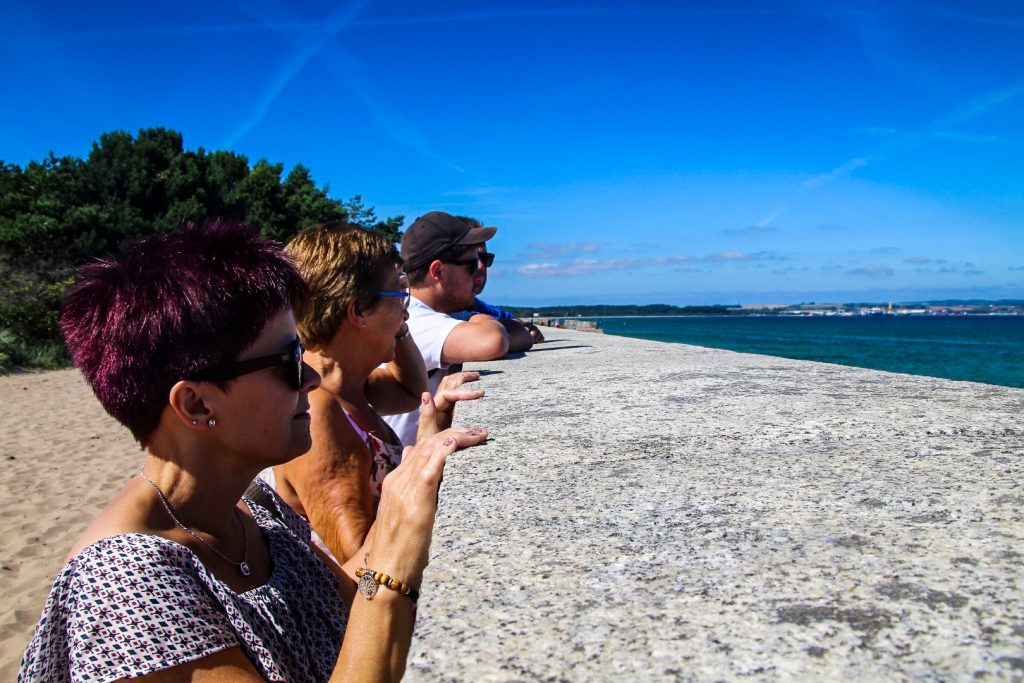
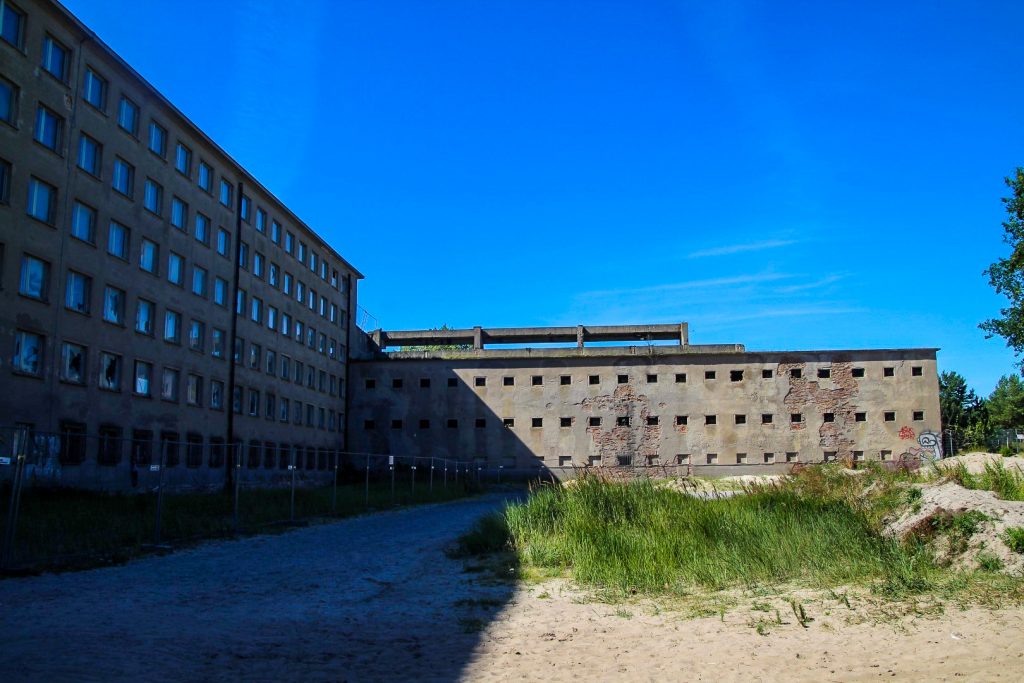
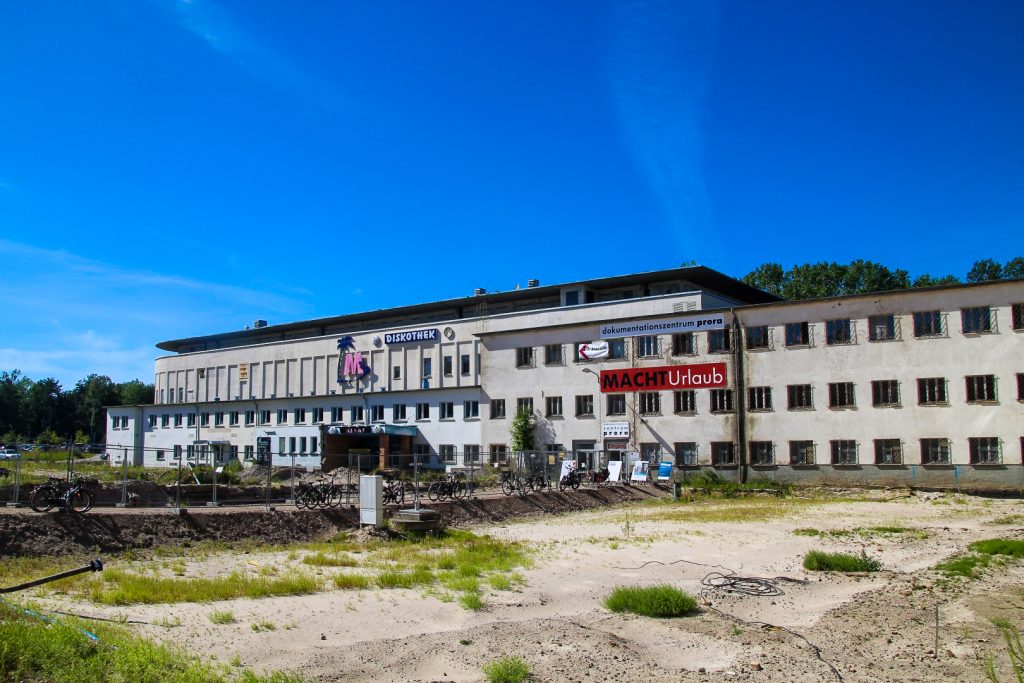


Harbour atmosphere at Lauterbach Mole
After seeing Prora from both ends, we drove to Lauterbach Mole for an ice cream before heading back to Stralsund.
Lauterbach is the end station for Rasender Roland, and is also home to an atmospheric harbour with a lovely view to Vilm, an uninhabited island located less than two kilometers from the shore.
It was only meant to be a quick ice cream stop, but we really liked Lauterbach. Brandon even said that it was his favourite place on the island! I’m glad we did stop there for a while.

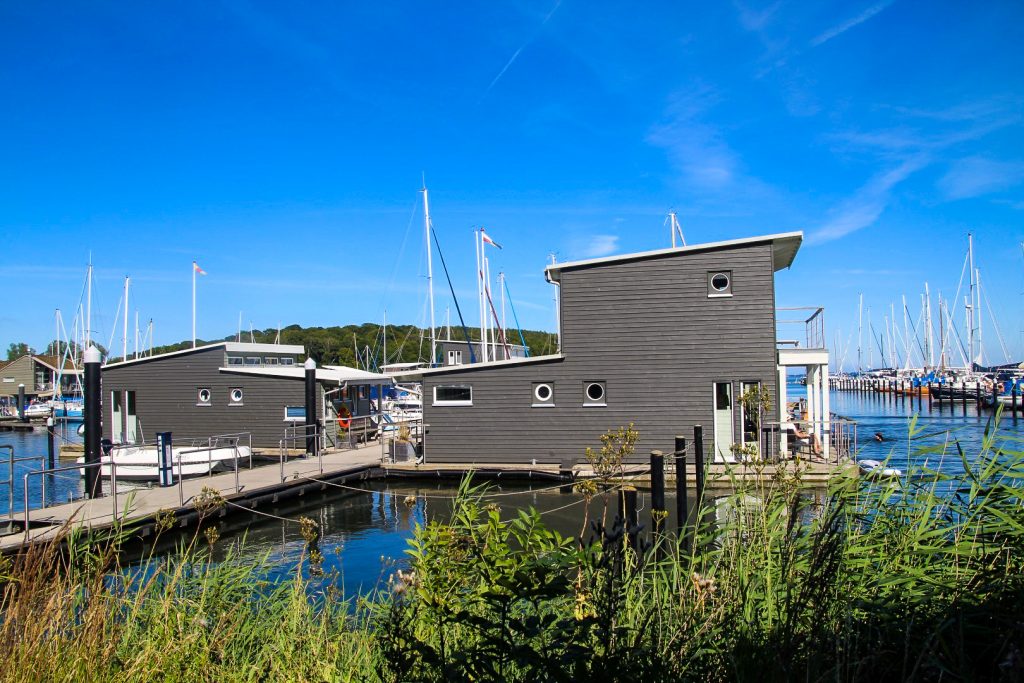

A return to the cliffs for a 7,5 km hike
On our second to last day, we all wanted to do different things. Brandon explored Stralsund, our parents and grandmother strolled through the town of Sassnitz on Rügen and I returned to my favourite place on the island – Jasmund National Park.
After our family visit to the chalk cliffs, I just knew that I’d have to come back. I’d read about a hike along the chalk cliffs which starts in Sassnitz and goes through the ancient beech forest at the edge of the cliffs before it ends at Königsstuhl, thus offering lots of views of the cliffs that I hadn’t yet seen. The trail is only 7,5 km but takes around 2,5 hours to complete due to the hilly terrain. I started the hike at 12.35 PM and promised my parents to be finished 2,5 hours later so they could pick me up. But that meant having to walk a lot faster than I’m used to to make up for my many photo stops!
It was a gorgeous day, not too warm or cold, and the trail was mostly empty, so going fast wasn’t a problem. In fact, I rather enjoyed it. It wasn’t until I got to Kieler Ufer where a staircase leads down to the beach under the cliffs that a few other people started appearing on the trail.
The hike was absolutely breathtaking with many gorgeous viewpoints of the majestic cliffs throughout. I’m glad I found time to do it. And would you believe it – I finished exactly on time, at 3.05 pm!
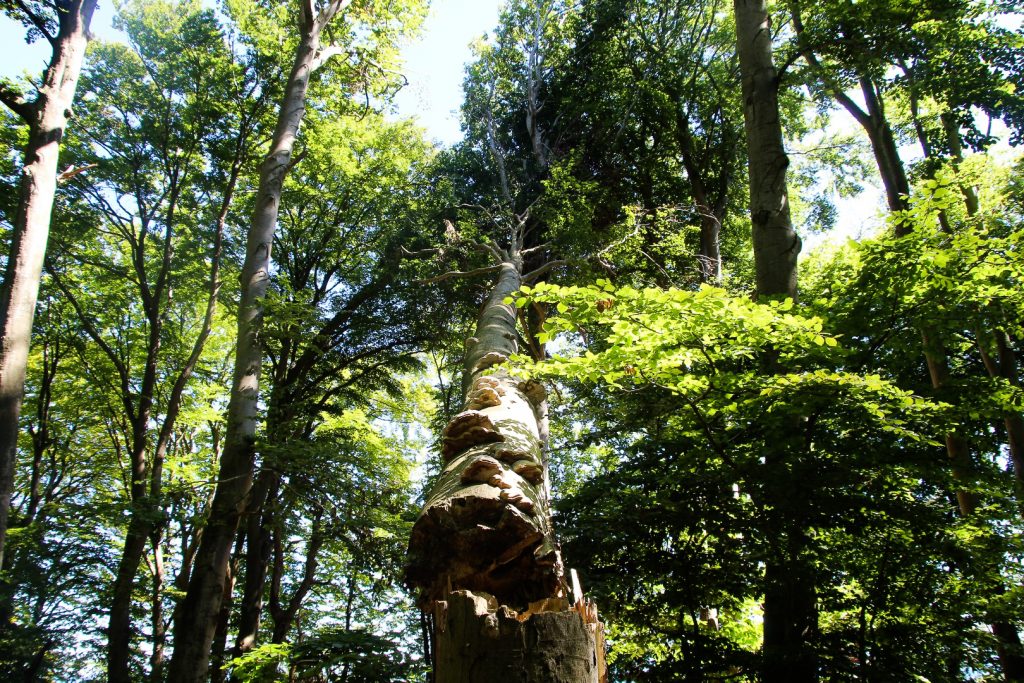
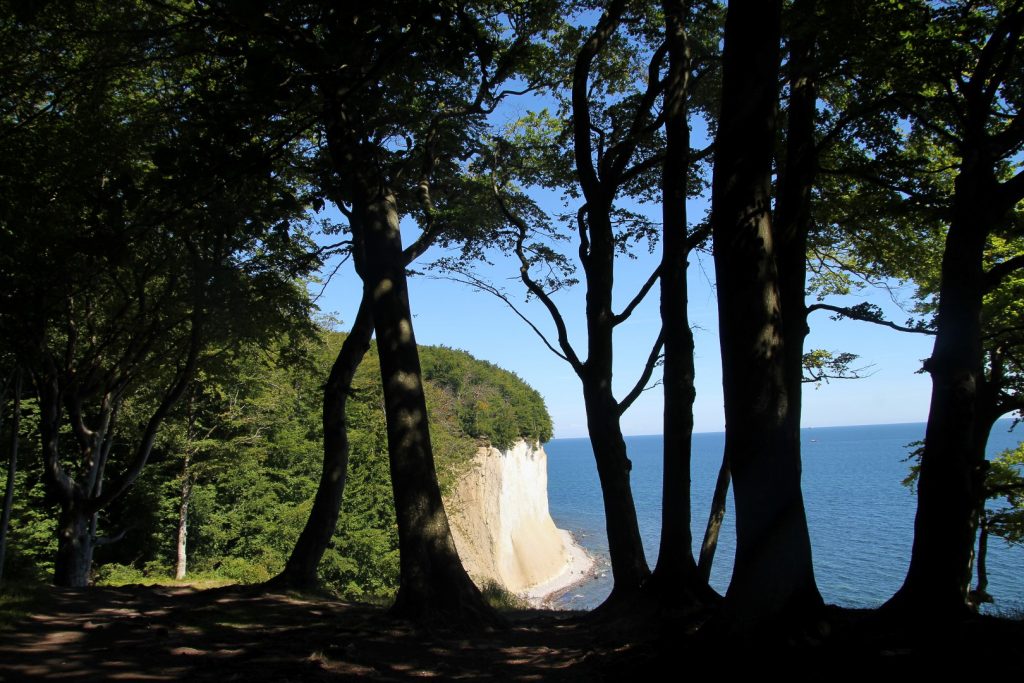
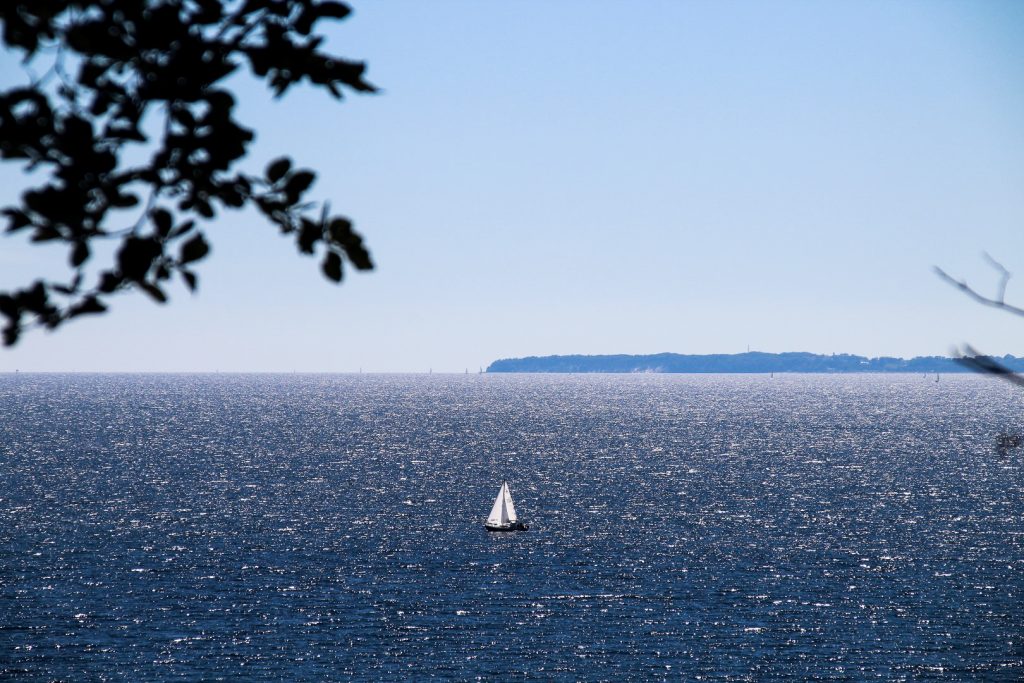


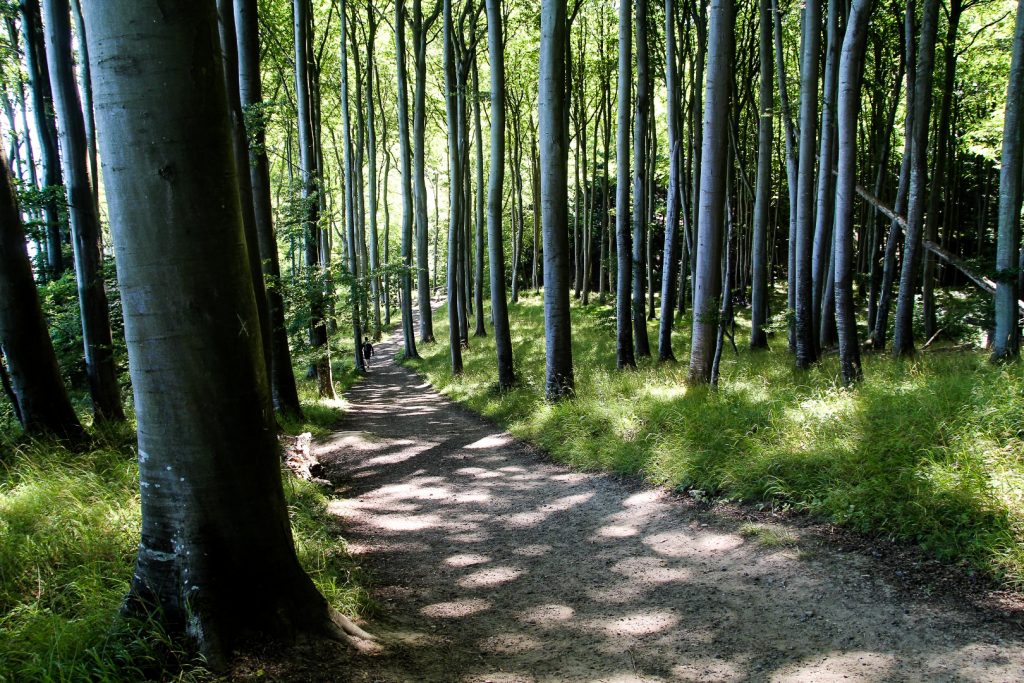
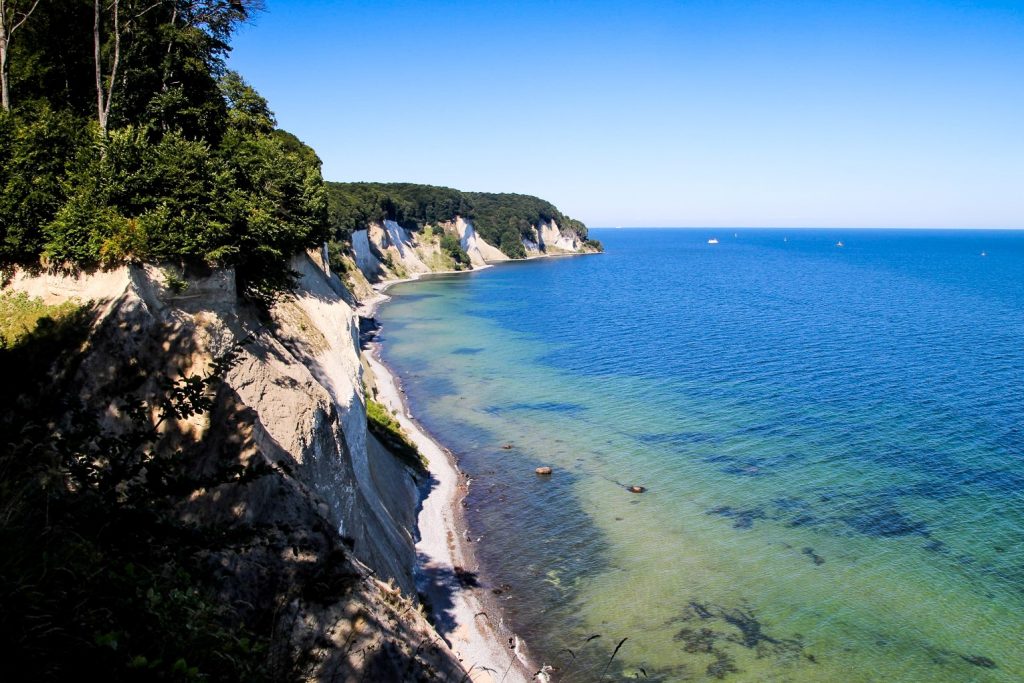
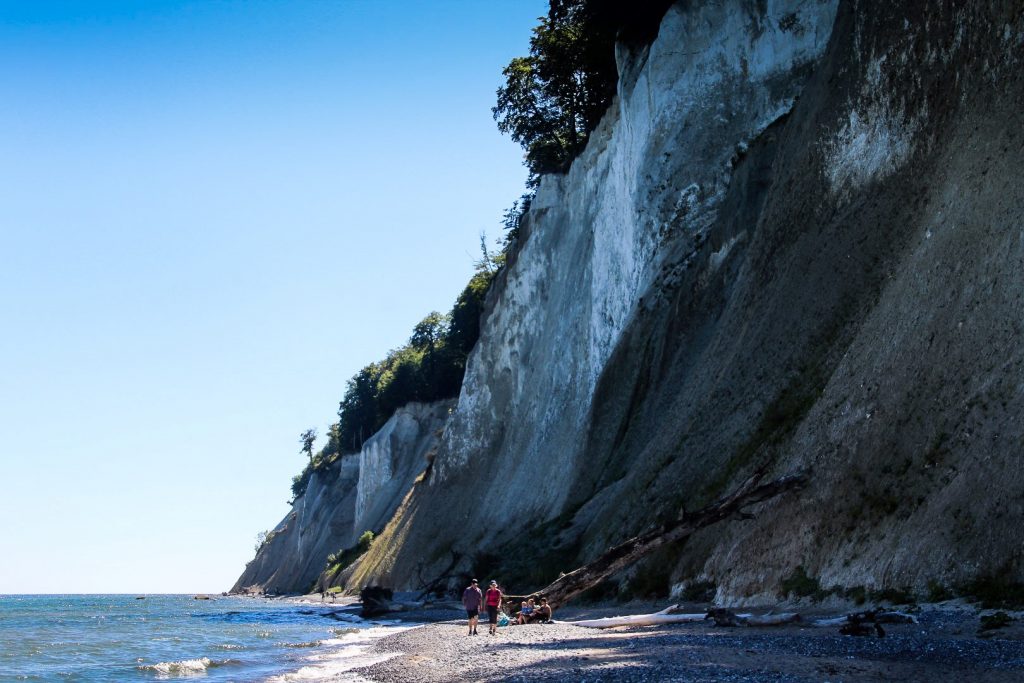
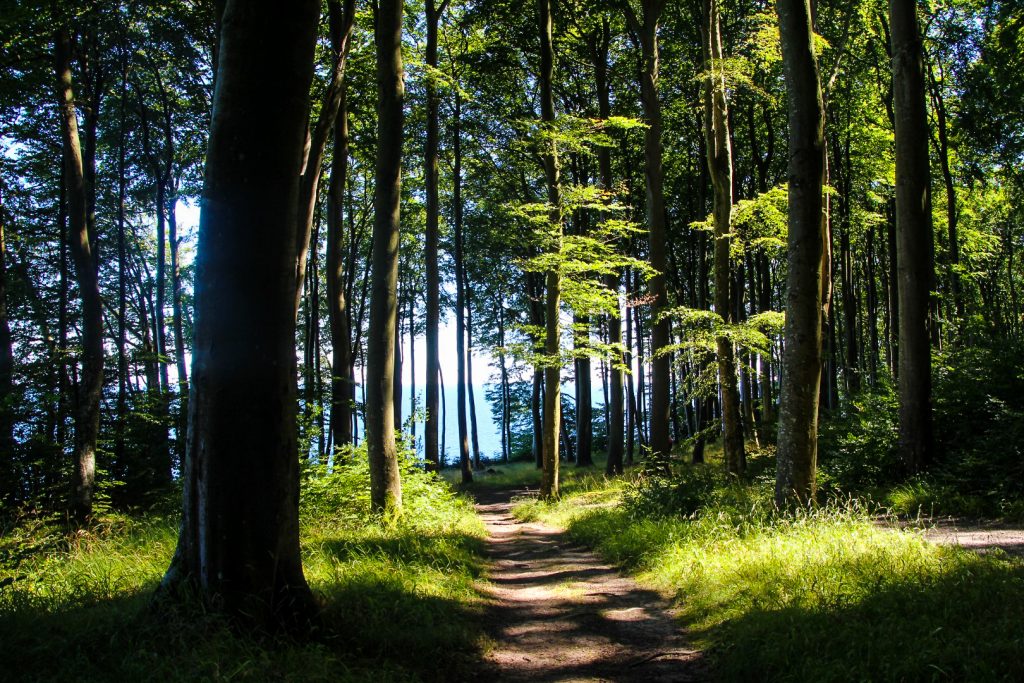
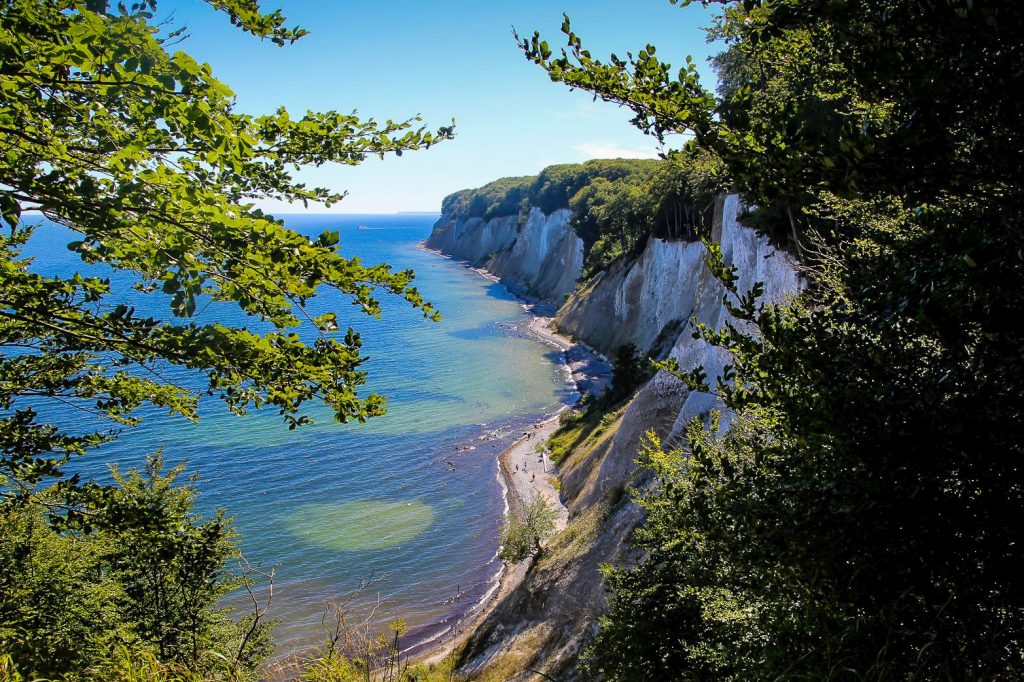

Altefähr, the first/last town on Rügen
On the way home, we made one last stop on Rügen for ice cream, in the village of Altefähr where we’d also eaten dinner earlier that week.
Altefähr is the first (or last) village on Rügen after/before the bridge, and it is full of traditional thatched cottages. It is also home to the prettiest church I saw on the island with an abundance of murals. And to top it off, it has the best views of Stralsund found on the island.
Unfortunately, the food wasn’t all too good in the village, but the village itself is lovely and well worth a stop on your way through Rügen.
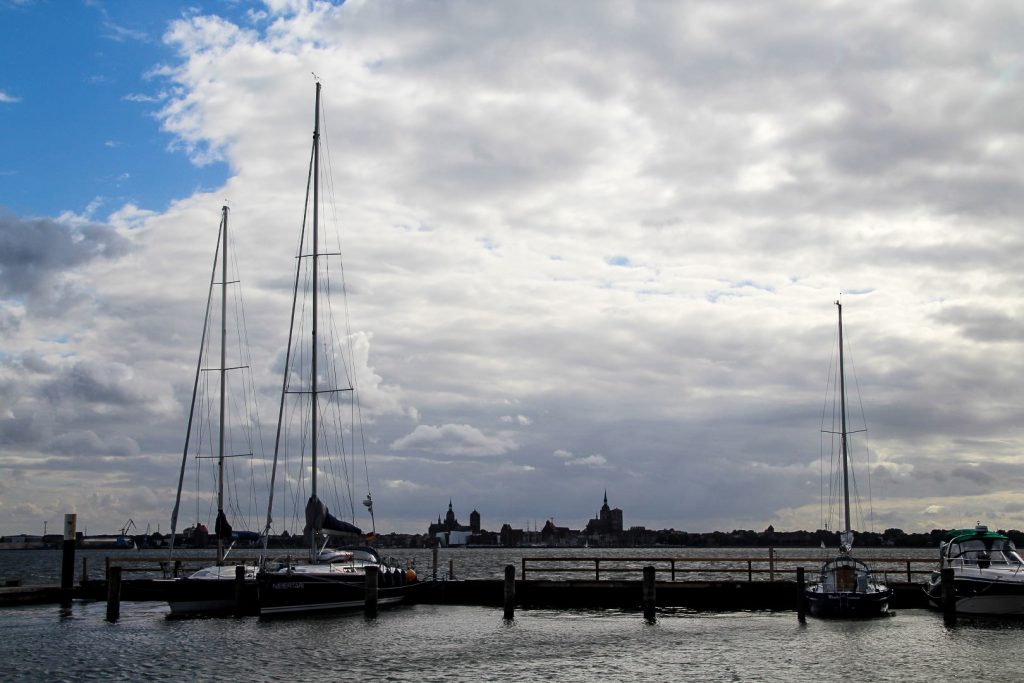



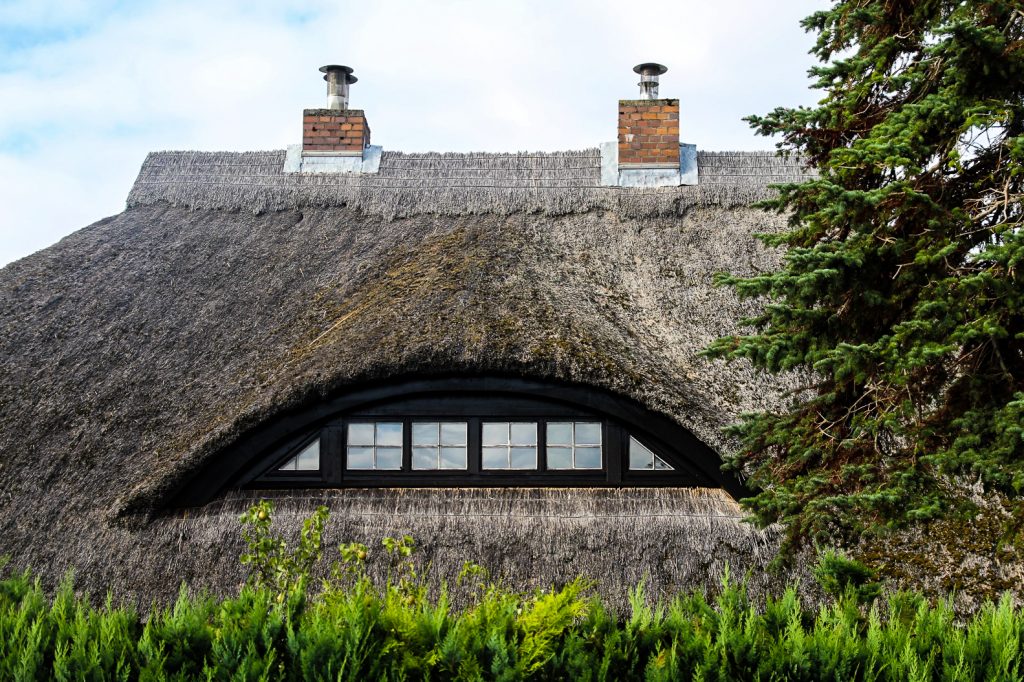
A week on Rügen was just enough to scratch the surface of this beautiful German gem. There are many spots on the peninsulas and on the connected island of Ummanz that we didn’t have time to explore, so a return is definitely on the cards.
Next time, I will be hitting some of the islands’ 200 kilometers of cycling trails!
Leave a Comment
Pingback: A weekend on Nakskov Fjord: Camping, sailing and hiking on the edge of Lolland – Northtrotter on 18/09/2020
Pingback: Red cliffs, seals and birds galore: A journey to Helgoland, an isolated archipelago in Germany – Northtrotter on 18/09/2020
Pingback: Idyllic Hiddensee, a car-free island in the Baltic Sea – Northtrotter on 18/09/2020
Pingback: My September 2020: A perfect trip to Helgoland – Northtrotter on 18/09/2020
Pingback: Stralsund and Dänholm: Hanseatic charm on the Baltic Sea – Northtrotter on 18/09/2020
Pingback: Summer days in Lübeck, the city of seven spires – Northtrotter on 18/09/2020

6 COMMENTS